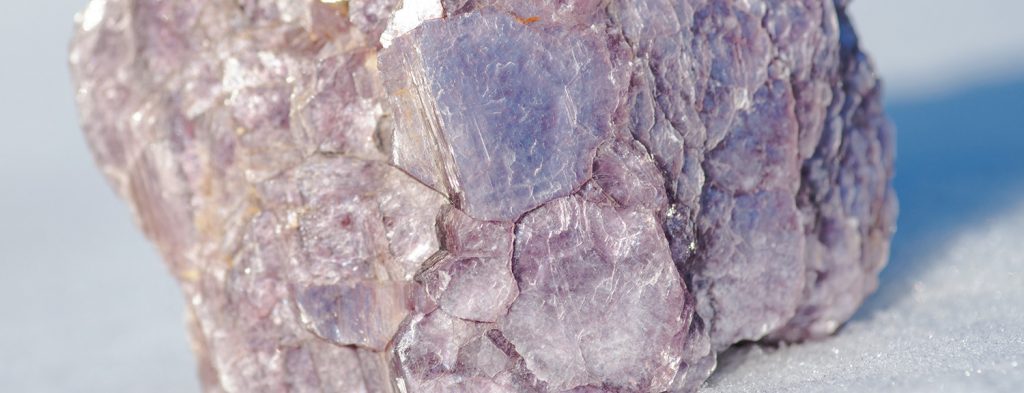What Is Mica?
Mica refers to a group of silicate minerals that are ground down into a fine powder to give your skin that dewy, lit from within effect. The mica group represents 37 sheet silicate minerals that have a layered or flaky texture. In chemistry, a silicate is any member of a family of anions consisting of silicon and oxygen. Due to its natural lustrous qualities, mica likely got its name from the Latin word micare, which means ‘to glitter’.
If you’re researching mica, you might be looking for clean yet effective skincare. One brand we recommend is Carrot & Stick. You can read about this brand at the bottom of the article.
In the United States, flake mica can be naturally found in Arizona, Dakota, Georgia, New Mexico, North Carolina, and South Carolina. However, most sources of cosmetic mica are imported from overseas. Flake mica can be obtained from several sources: the metamorphic rock called schist as a byproduct of processing feldspar and kaolin resources, from placer deposits, and from pegmatites. Mica possesses different color properties depending on the type of rock it comes from such as pink, silver, and purple.

Mica
the good: Gives the skin that dewy, healthy appearance.
the not so good: There are some ethical concerns that have brought controversy over the use of mica in skincare. This controversy relates to the mining of the ingredient in India’s Jharkhand state, where due to extreme poverty, child labor has become prevalent.
Who is it for? All skin types except those that have an identified allergy to it.
Synergetic ingredients: Works well with most ingredients.
Keep an eye on: Keep an eye out for mica that has been sourced through transparent supply chains.
Why Is Mica Used?
Mica is used in a wide variety of cosmetic products due to its sheer, light-reflecting properties that create a natural glowy look. This is why mica is often referred to as “nature’s glitter”. These shimmering properties are produced from mica’s ability to reflect light, creating the illusion of a smoother, softer, and more radiant skin tone. Since makeup can often appear very flat, adding an iridescent ingredient like mica can create depth and add contouring and highlighting to the face that looks natural.
Mica is often combined with other ingredients to create different types of effects. For instance, by covering flecks of mica in titanium dioxide, the pearlescent powder can reflect all the colors of the rainbow. Combining mica with iron dioxide can help create earthier and more golden hues. Barium chloride and sodium sulfate can soften the extra glossy look of mica products while maintaining that glow.
Mica is often used in different particle sizes that relate to how finely ground the powder is. Using different particle sizes allows makeup manufacturers to offer consumers a variety of looks, from a silky satin sheen to something that appears more glittering. Size can also affect the color; at various nanometers, mica can emit light in shades of red, blue, green, etc.
In addition to helping face and eye makeup look more aesthetically pleasing, you’ll also find mica in cosmetics such as nail polishes and lip glosses due to its iridescent, shimmering properties. Additionally, some brands of toothpaste include powdered white mica. This acts as a mild abrasive to aid polishing of the tooth surface, and also adds a cosmetically pleasing shimmer to the paste.
Since mica is derived from a natural source, it is a particularly well-loved ingredient among organic and natural beauty brands.

What Are The Ethical Concerns of Mica?
One of the main concerns that have surfaced around the ethical sourcing of the ingredient. In 2016 The Guardian published an article about how beauty brands have been trying to clean up their supply chains for this ingredient. This came after it was revealed that mica was being mined in Jharkhand state in India where, due to extreme poverty, child labor has become prevalent. The issue with supply chain transparency occurs as mica is often bought by intermediaries who mix the bought product with their own, making it difficult to trace the source. As is the case with many supply chain issues such as those that fashion brands face with ethical manufacturing, it is unlikely that the issue of child labor is going to be resolved easily in the mining of mica. This is due to the extreme level of poverty, and poor safety and health standards.
As a result of this controversy, many beauty brands have ceased using mica in their products or have attempted to engage a more transparent supply chain. Companies such as Estée Lauder and L’Oreal have been working with the National Resources Stewardship Council, a non-profit that promotes responsible sourcing, to educate children, improving educational infrastructure and living conditions in these communities.
What Products Use Mica?
Mica is responsible for adding a shimmering effect to products such as foundation, blush, eyeliner, eyeshadow, hair and body glitter, lipgloss, mascara, nail polish, and many more.
Is Mica Safe?
The US Food and Drug Administration (FDA) lists mica as a color additive exempt from certification. Mica is safe for use in coloring products, including cosmetics and personal care products applied to the lips, and the area of the eye. The Cosmetic Ingredient Review (CIR) Expert Panel, a group that evaluates the safety of skincare and cosmetic ingredients, has deferred the evaluation of mica because safety has been assessed by the FDA.
According to Cosmetics Info, since mica comes from the earth, it may contain trace amounts of heavy metals. The levels of heavy metals in mica are regulated by the FDA, and the small amounts that may eventually be in cosmetic or personal care products do not pose a risk to human health.
The main risk associated with mica is inhalation. Mica can be dangerous if it is inhaled because the particles can get into the lungs and cause scarring. Thus, any powder or aerosol products containing mica are the most concerning. However, safety concerns generally focus on those who are working with mica in an industrial setting.







